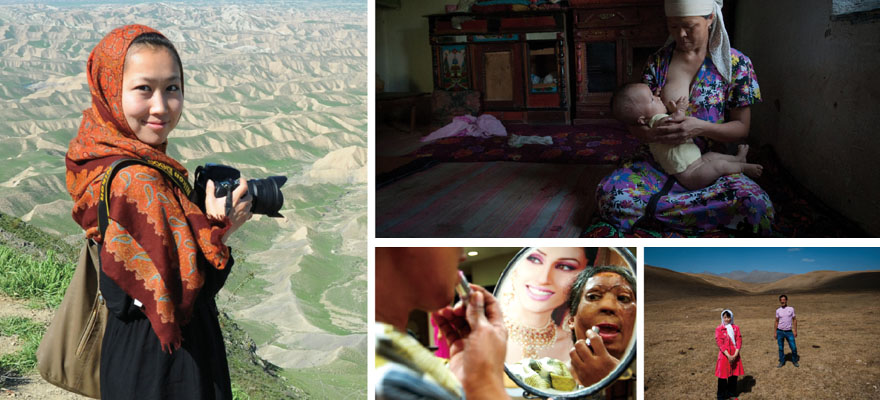Home > Highlighting JAPAN >Highlighting Japan January 2014>Japanese Abroad
Highlighting JAPAN
Japanese Abroad
Shedding Light on the Overlooked
Noriko Hayashi

AN aged arm emerging from a sphygmometer. A child weeping alone against a bright yellow wall. A lonely old woman asleep beside her bed, a magazine open on her lap. The red keel of a ship washed up in the midst of a shattered street.
If a picture is worth a thousand words, Noriko Hayashi's photos could fill an encyclopedia on the subjects of desolation, pain and solitude.
"I always ask myself what it means to be a professional photographer," Hayashi says. "People seem to be recognized as professionals just for being able to make a living off taking photos, but there are many brilliant photographers who can't make a living off their work."
Hayashi's development as an international photographer began in 2006, while she was studying international relations in university. In that year, she traveled to the Gambia to deepen her knowledge of that nation and Liberia. While there, she applied for work at The Point, a local newspaper. Since her English wasn't up to scratch for editorial work, she was asked to contribute as a photographer.
Working in the Gambia, Hayashi began to seek out those overlooked stories that can be found under the surface of society. It wasn't long before she began to travel the world documenting women's rights concerns, social issues and natural disasters, striving to show what she describes as "the stories that are too small to get told by big media."
Through her photos, she has chronicled women scarred by acid attacks, children born with HIV, and people suffering in the aftermath of earthquakes and floods. Her publication history now includes Der Spiegel, The Washington Post, the International Herald Tribune, National Geographic Japan, Marie Claire UK, the Los Angeles Times and many more.
Asked whether she has ever been concerned about her personal safety, she replies: "It's not as if I've gone into actual battle zones. I've never faced a situation of approaching death, so I've never felt as if my own life was in danger. I'd rather say that being oblivious to the danger around you is the most dangerous thing you can do."
In 2012, Hayashi was awarded the 7th annual Younosuke Natori Photography Award by the Japan Professional Photographers Society. Regardless, she remains modest about her achievements, claiming, "Anyone is capable of taking pictures."
While that may be so, it's the intimacy of her work that sets it apart. Hayashi captures her subjects in their most private moments: For a series on Japan's aging society, she followed an elderly woman to bed and even into her bathtub. In a series on Mailuu-suu, a major uranium mining hub at the height of Russia's Soviet era, she captured a tired Kyrgyzstani woman breastfeeding her sick child. In a series on women scarred by acid attacks, she documented a Pakistani woman in the midst of facial reconstructive surgery, metal sutures still being applied by a doctor's hands.
In contrast to her stark images, Hayashi herself is surprisingly upbeat. "I've always had good experiences with people," she says. "Kindness and goodwill are at the core of human beings in every nation. I still try to stay in touch with my friends in the Gambia – I'll never forget them."
In 2013, Hayashi won the Visa d'or Feature Award – the top award for feature reporting – at the Visa pour l'image festival in Perpignan, France. She was the first Japanese person to win the award in its 25-year history, claiming it with a series of images depicting the kidnapping and forced marriage of a woman in Kyrgyzstan.
Hayashi acknowledges that print photographers face increasing challenges in the digital age. "I make a living off my photographs for now," she says. "But I'm concerned about the future, too. The economics of this job tell me that there's no space for mediocre work. But this is giving me the push to challenge myself, to be better."
For Hayashi, it seems that even the best is not enough.
© 2009 Cabinet Office, Government of Japan






